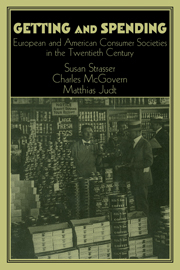Book contents
20 - Consumption and Consumer Society: A Contribution to the History of Ideas
Published online by Cambridge University Press: 05 January 2013
Summary
In a little essay from the year 1772, Denis Diderot complained bitterly about his new jacket. With melancholy, he remembered his old housecoat and how well he felt in it, how he and it were one. “Why didn't I hold onto it? It fit me, I fit it.” Not only was he extremely uncomfortable in his new coat, it had also succeeded in turning his whole life topsy-turvy, even laying waste to his household. His old coat had been in conformity with the things of everyday life: Coat, table, and chair formed a harmonious ensemble. “Now everything has gone to pieces” was Diderot's angry remark. “The harmony is a thing of the past; and with it, the proper proportion.” The cause of this senseless destruction is so-called good, discriminating taste, the unhappy urge to prettify and renew everything. Instead of “practicing thrift and economy,” Diderot had ruined his household. All that remains is a small painting, and it is this that gives him consolation in face of the current devastation. The painting takes up the motif of destruction, not that of the drive for new items, but rather that called forth by time, that which “corrodes even the hardest things of this world,” a natural mutability that sets itself against the destruction wrought by new fashions.
- Type
- Chapter
- Information
- Getting and SpendingEuropean and American Consumer Societies in the Twentieth Century, pp. 431 - 448Publisher: Cambridge University PressPrint publication year: 1998
- 2
- Cited by



